In pictures: Maracana stadium reopens
- Published
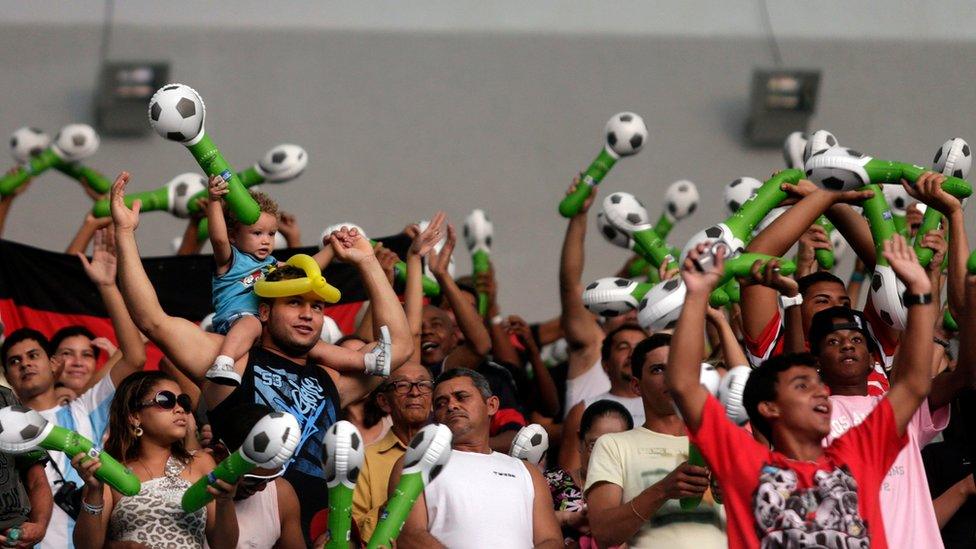
The legendary Maracana stadium in Rio de Janeiro has reopened with a test event attended by thousands of workers who helped with a nearly three-year-long renovation.
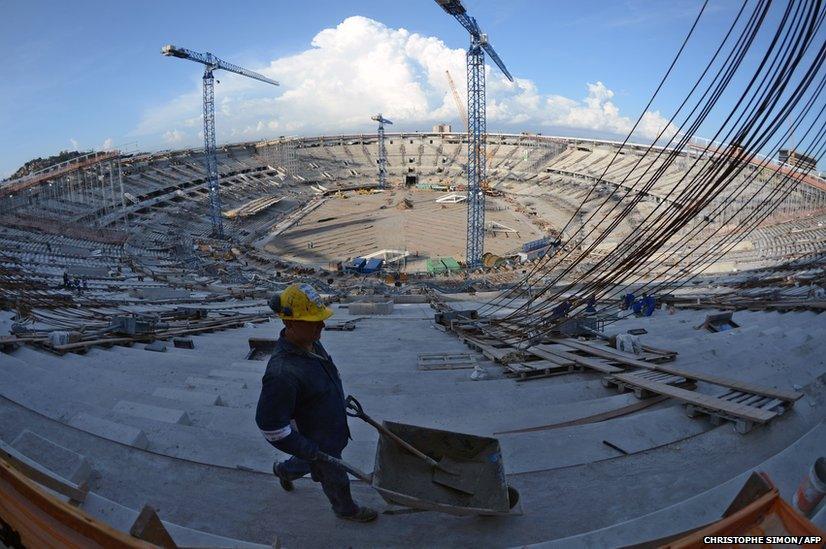
The stadium has been undergoing renovation since August 2010 in preparation for high-profile sporting events to be hosted by Brazil, including the 2014 World Cup and the 2016 Olympics.
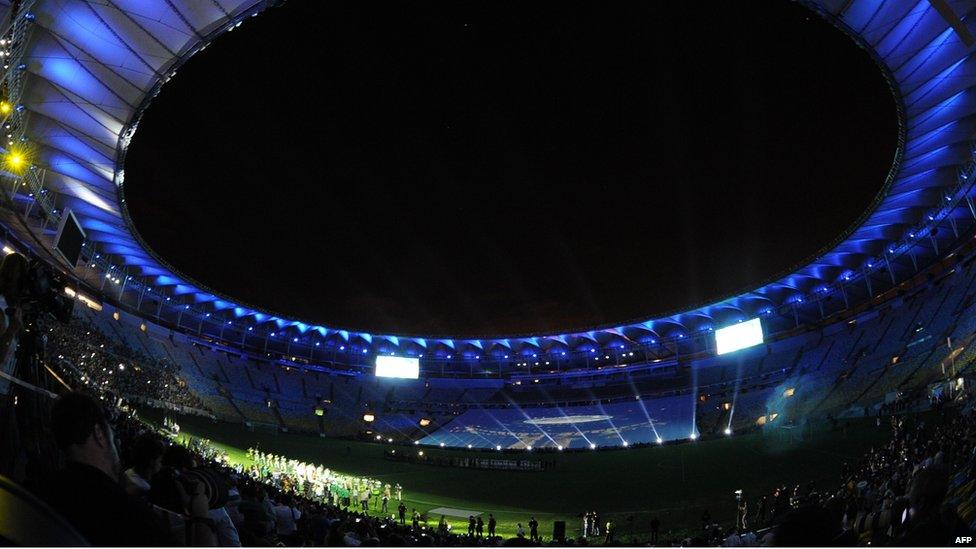
Spectators were treated to an exhibition match between teams led by the former Brazil forwards Ronaldo and Bebeto - but Brazilian media reported problems with the stadium, including flooding, lifts and turnstiles not working and unfinished construction.
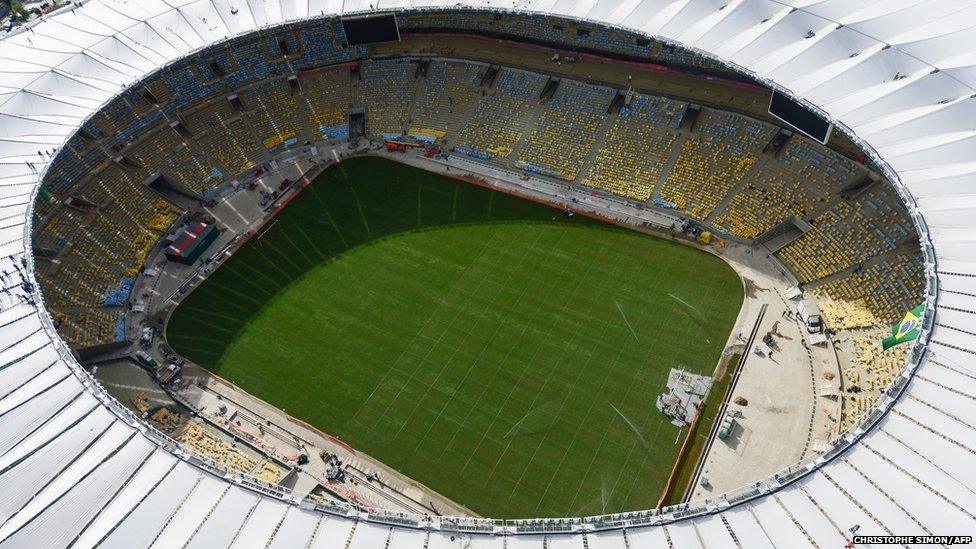
The inauguration date of the iconic stadium, set to host the World Cup final next year, has been repeatedly delayed. It was originally due to reopen last December.
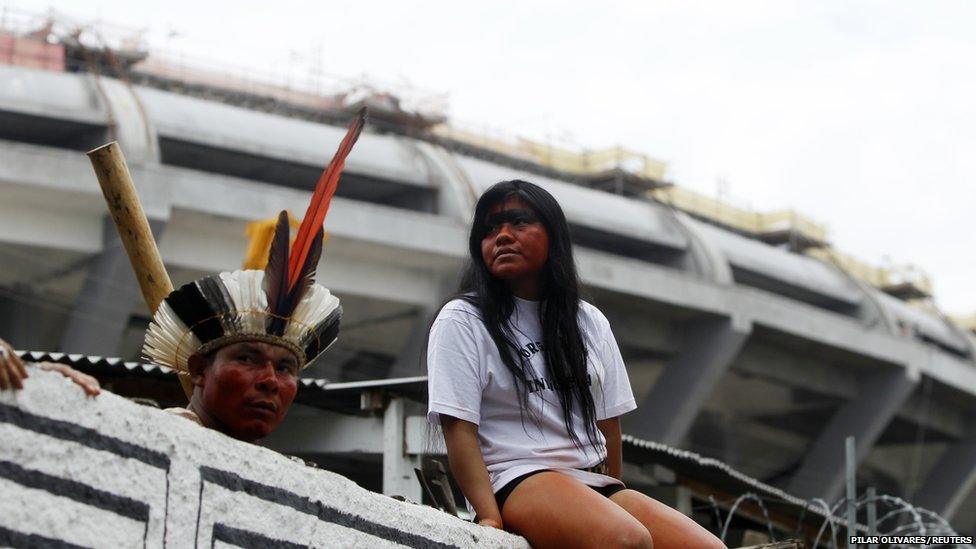
The rebuild has been beset by controversy, delays and disputes. Hundreds of people took part in a protest over proposals to privatise the stadium. Many were indigenous people opposed to the removal of a museum and other buildings, which the government said needed to go to complete the work.
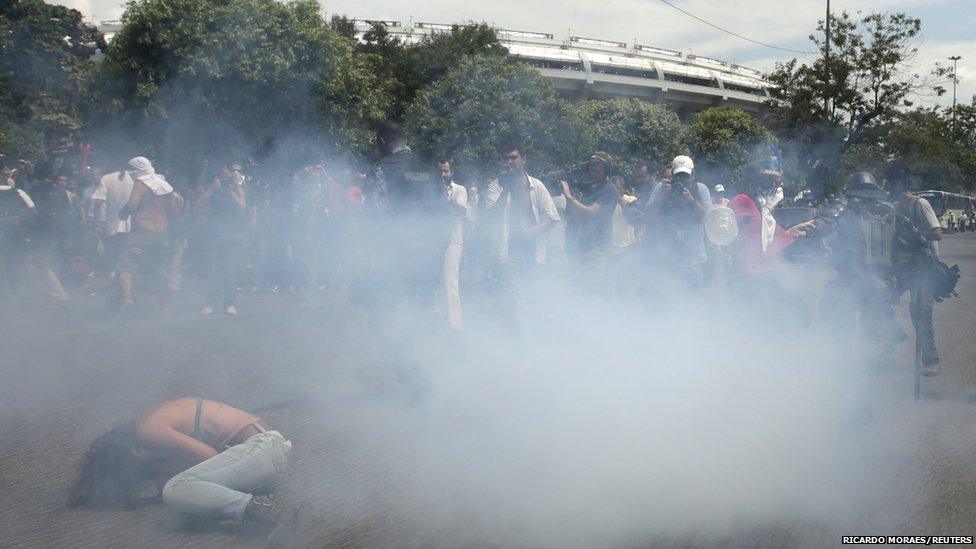
In March, police used tear gas and rubber bullets to evict protesters occupying the museum. The community, known as Aldeia Maracana (Maracana tribe), said they wanted to use the building to showcase their way of life to tourists during the World Cup and Olympics.
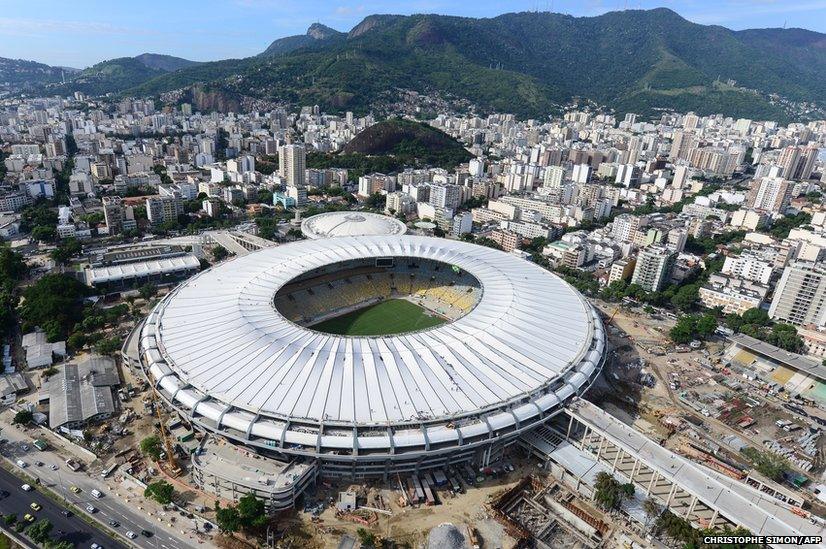
Built for the 1950 World Cup, the Maracana is where Brazilian footballing hero Pele scored his 1,000th career goal in 1969 and it has been sorely missed by football fans.
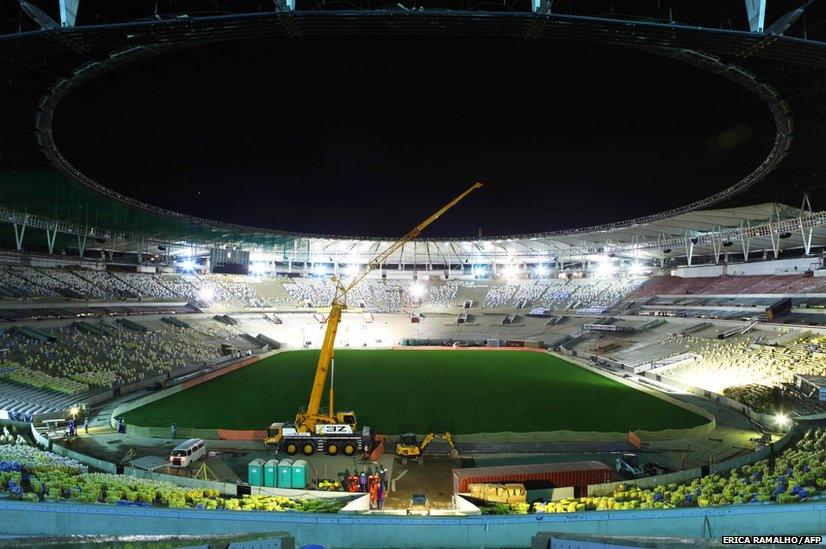
Juliana Ferreira, of the Rio de Janeiro state government, says: “It’s natural that the works have been delayed: first, because we have been refurbishing a 70-year-old stadium; second, we had to face some unusual circumstances, such as strikes, among other things. The stadium will be officially delivered on 24 May, meeting Fifa’s deadline and just in time for the beginning of the Confederations Cup."
.jpg)
The Maracana, officially the Estadio Jornalista Mario Filho, was originally constructed in the heart of Rio de Janeiro for the 1950 World Cup.
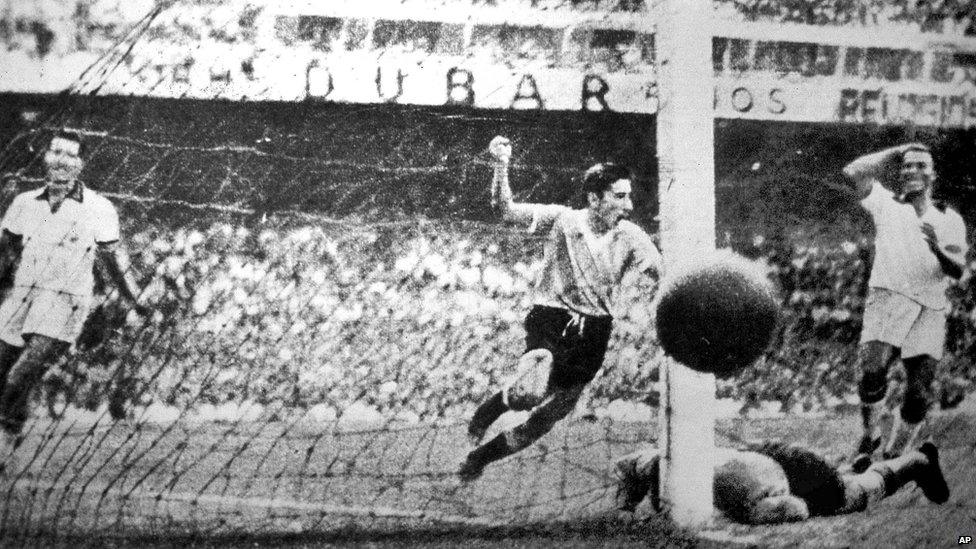
The stadium has been the scene of many great footballing moments, such as Uruguay's shock 2-1 victory over Brazil to win the 1950 World Cup Final.
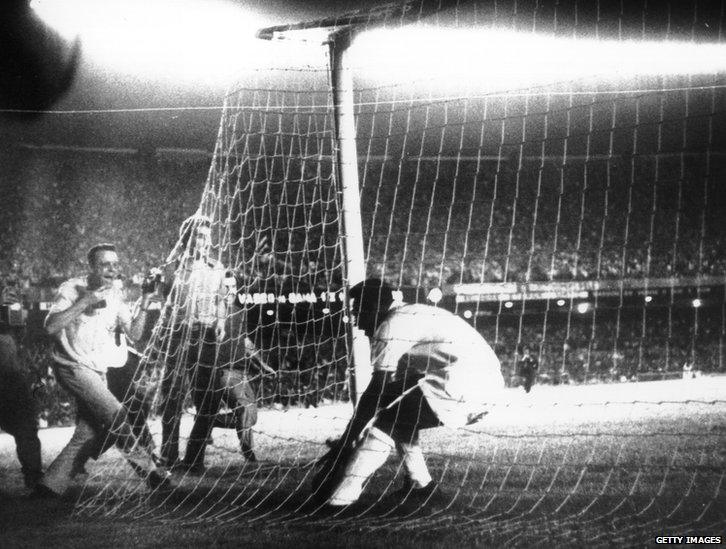
The legendary Pele scored his 1,000th career goal at the stadium on 19 November 1969, converting a penalty for Santos against Vasco da Gama.
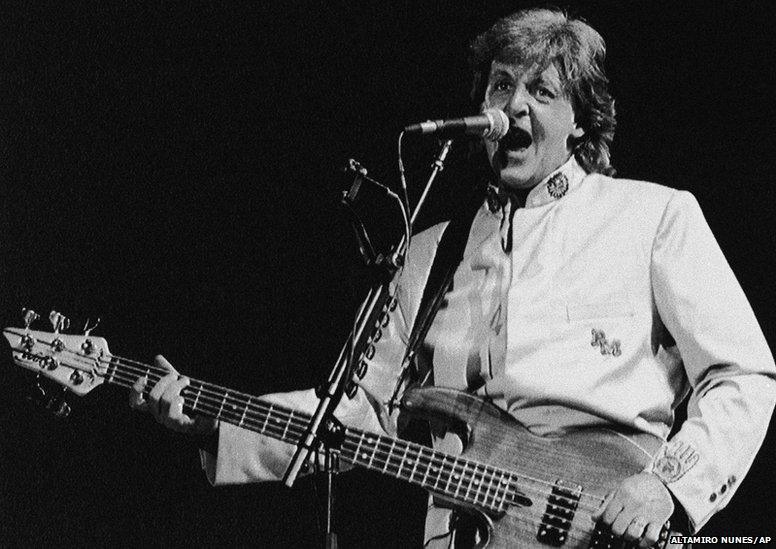
The stadium's huge capacity has attracted many other events. Both Tina Turner and Paul McCartney achieved Guinness World Records with performances at the Maracana. McCartney played to a packed house of 175,000 in April 1990. The audience was the largest ever to see a live performance by the ex-Beatle.
.jpg)
On 12 October 1999, 140,000 Catholic faithful gathered in the Maracana to celebrate the saint's day of Nuestra Senora de Aparecida, Brazil's patron.
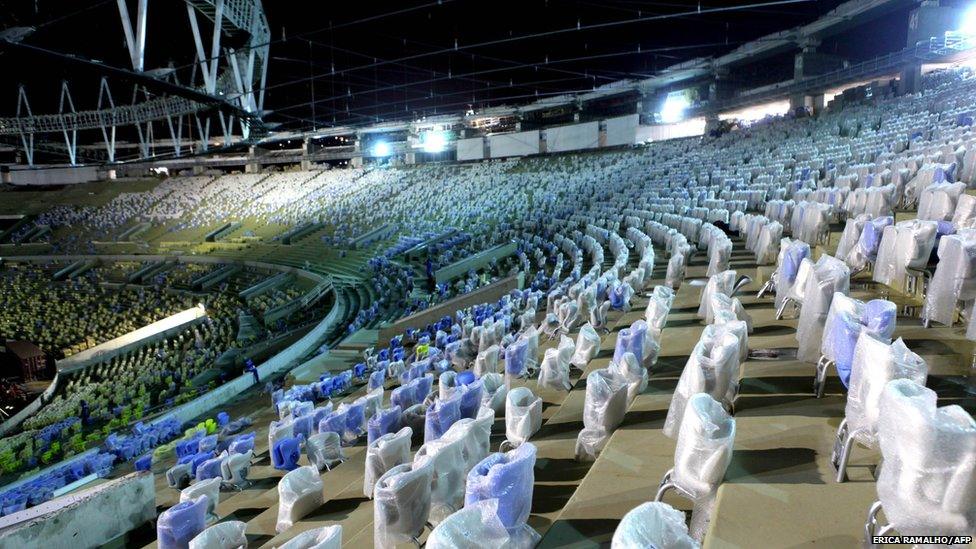
In 1992 part of the upper stand collapsed, injuring supporters and killing three. The capacity was subsequently reduced and after renovation the Maracana will be able to accommodate 76,935. It remains, nevertheless, Brazil's biggest football ground.
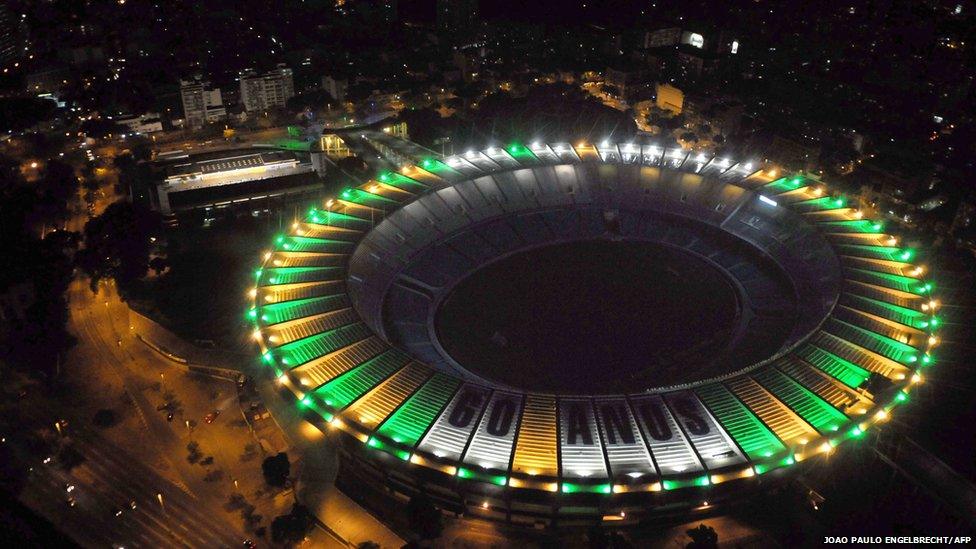
The world football authorities at Fifa promise that the Rio de Janeiro stadium will be in the limelight once again at Brazil 2014, hosting seven games in all, more than any other venue. Among those matches will be the final on 13 July.